Unless otherwise specified the following conditions apply: VIN
= 13.5 V, fSW = 400 kHz, L = 10 µH, COUT_CSP = 66 µF,
COUT_CSN = 0.1 µF, CBUS = 1 µF, TA = 25
°C.
Unless otherwise specified the following conditions apply: VIN
= 13.5 V, fSW = 400 kHz, L = 10 µH, COUT_CSP = 66 µF,
COUT_CSN = 0.1 µF, CBUS = 1 µF, TA = 25
°C.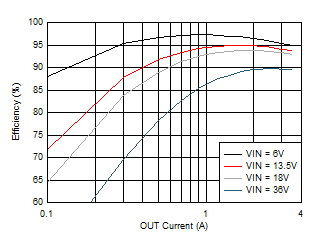
| VOUT = 5.1
V |
fSW = 400
kHz |
|
Figure 11-2 Buck Only
Efficiency. Unless otherwise specified the following conditions apply: VIN
= 13.5 V, fSW = 400 kHz, L = 10 µH, COUT_CSP = 66 µF,
COUT_CSN = 0.1 µF, CBUS = 1 µF, TA = 25
°C. 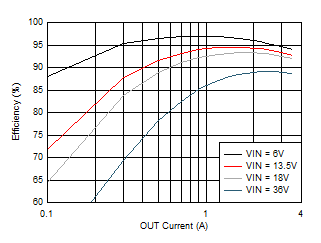
| VOUT = 5.1
V |
fSW = 400
kHz |
RSENS = 15
mΩ |
Figure 11-4 Efficiency With Sense Resistor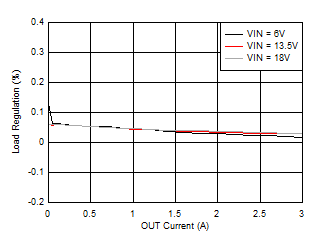
| VOUT = 5.1
V |
fSW = 400
kHz |
|
Figure 11-6 Load
Regulation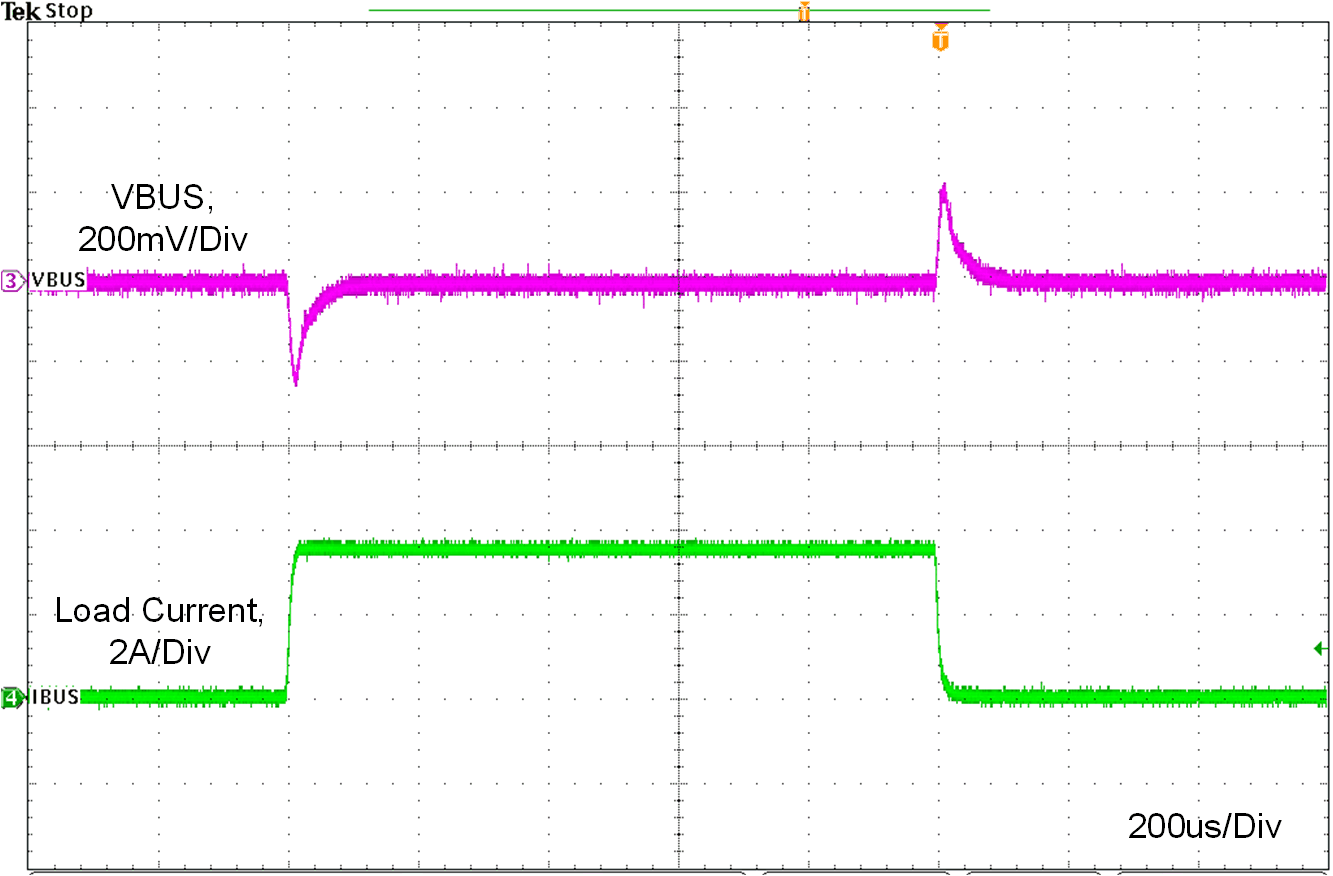
| VOUT = 5.1
V |
ILOAD = 0 A to
3.5A |
RIMON = 0
Ω |
Figure 11-8 Load Transient Without Cable Compensation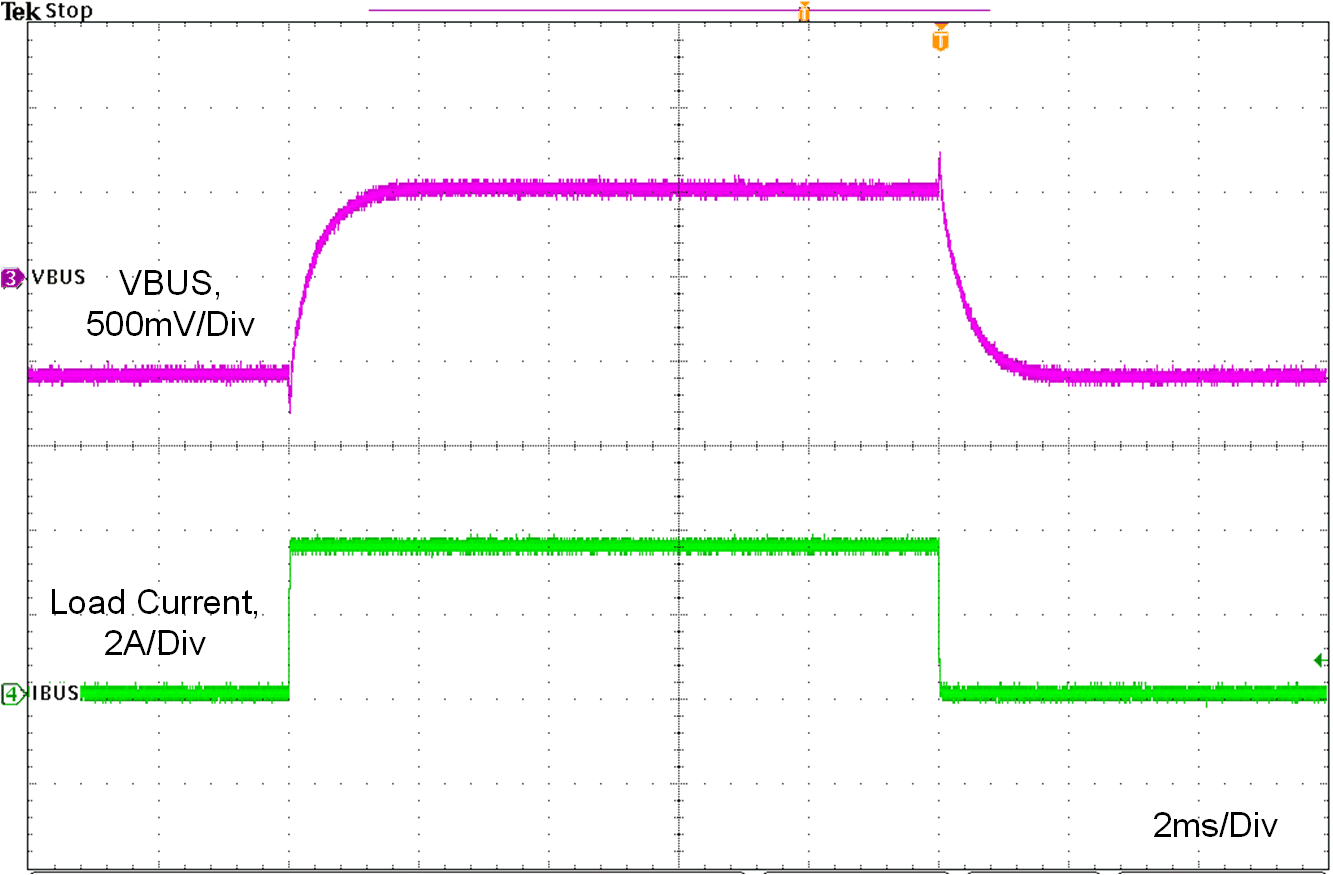
|
ILOAD
= 0 A to 3.5A |
RIMON
= 13 kΩ |
Figure 11-10 Load Transient With Cable Compensation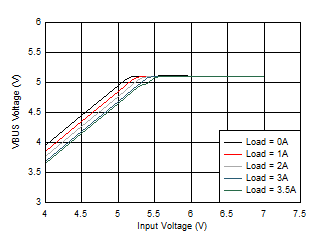 Figure 11-12 Dropout Characteristic
Figure 11-12 Dropout Characteristic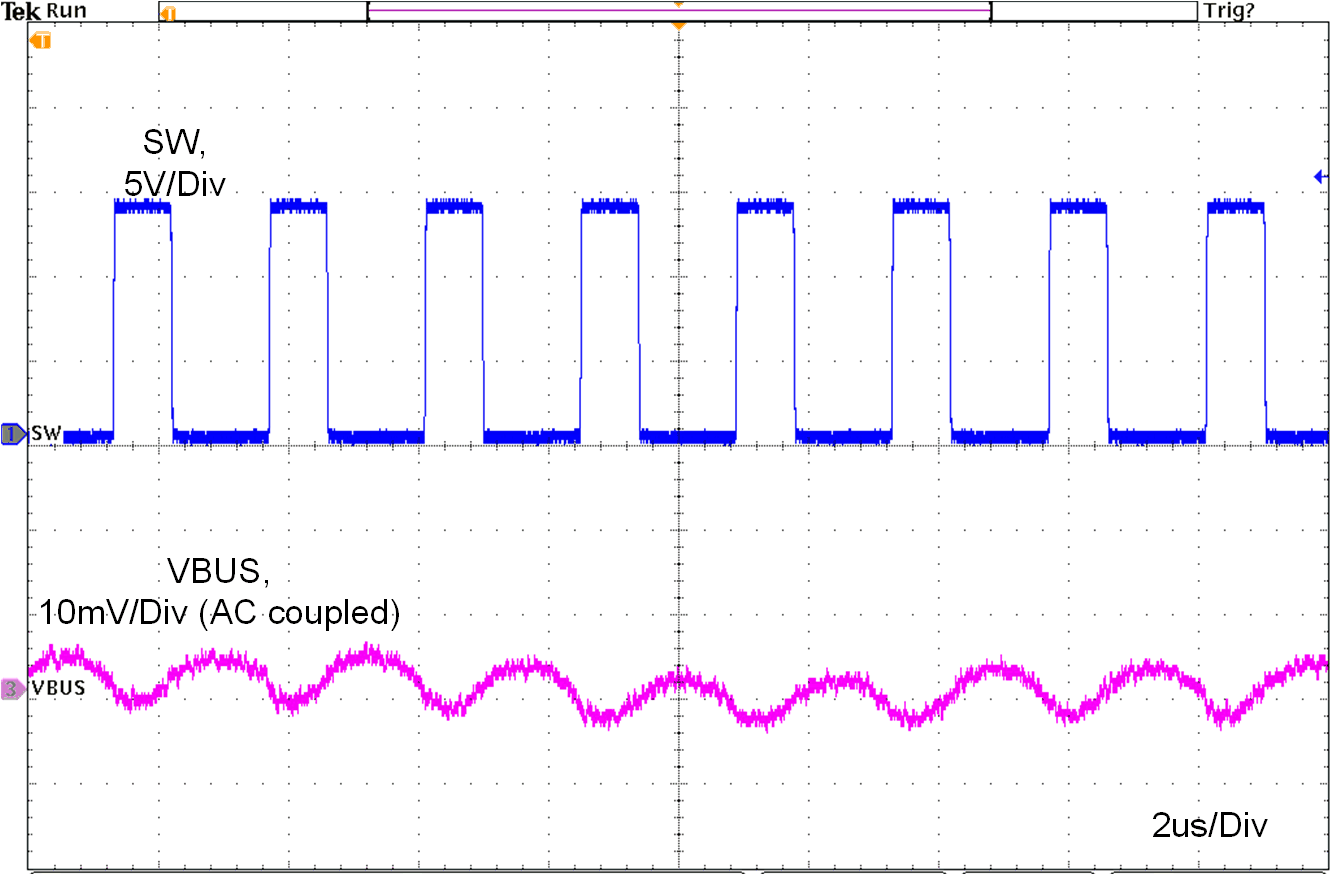 Figure 11-14 100-mA Output Ripple
Figure 11-14 100-mA Output Ripple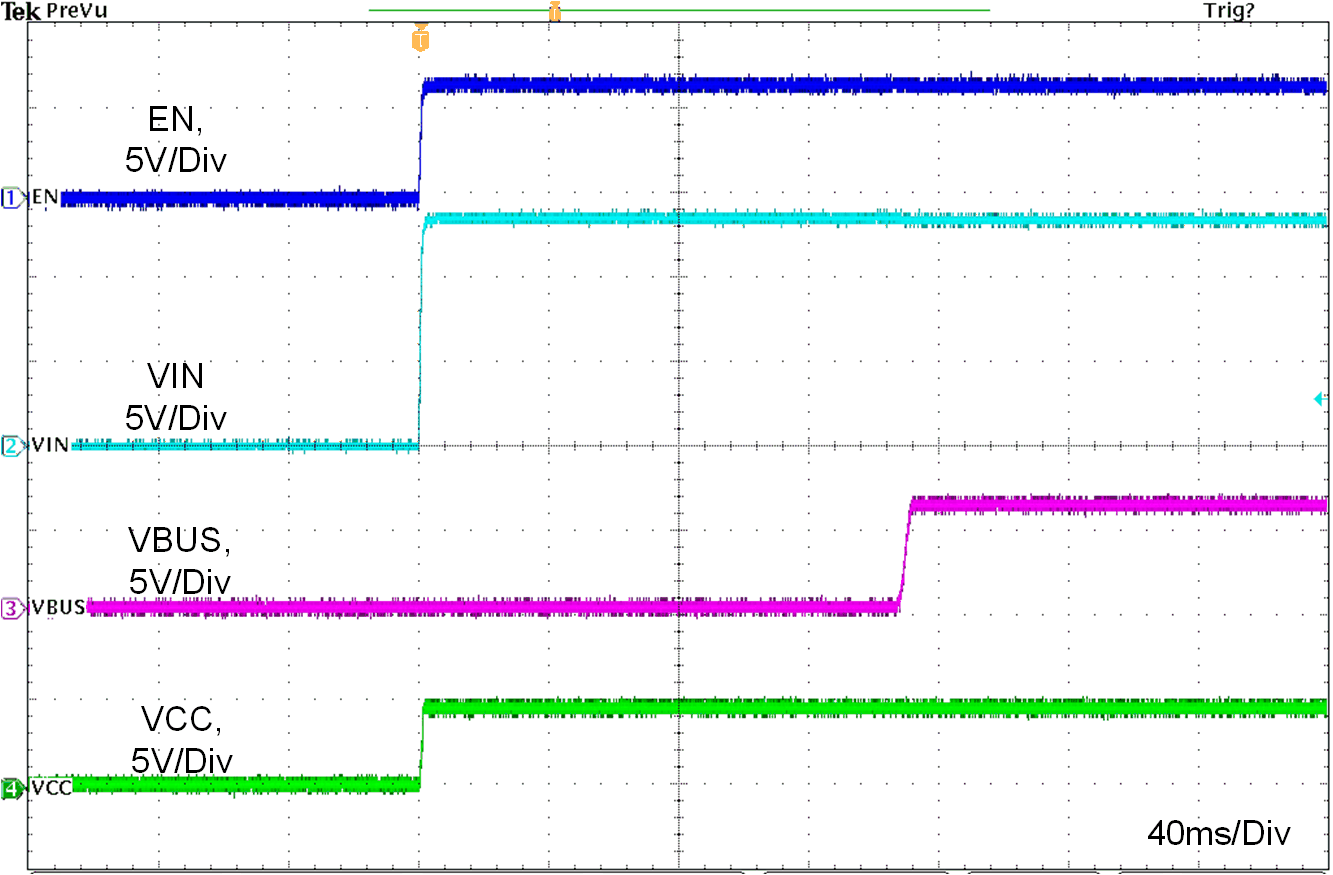
| VIN = 0 V to 13.5 V |
INT = 5.1 kΩ |
ILOAD =
3A |
Figure 11-16 Startup Relate to VIN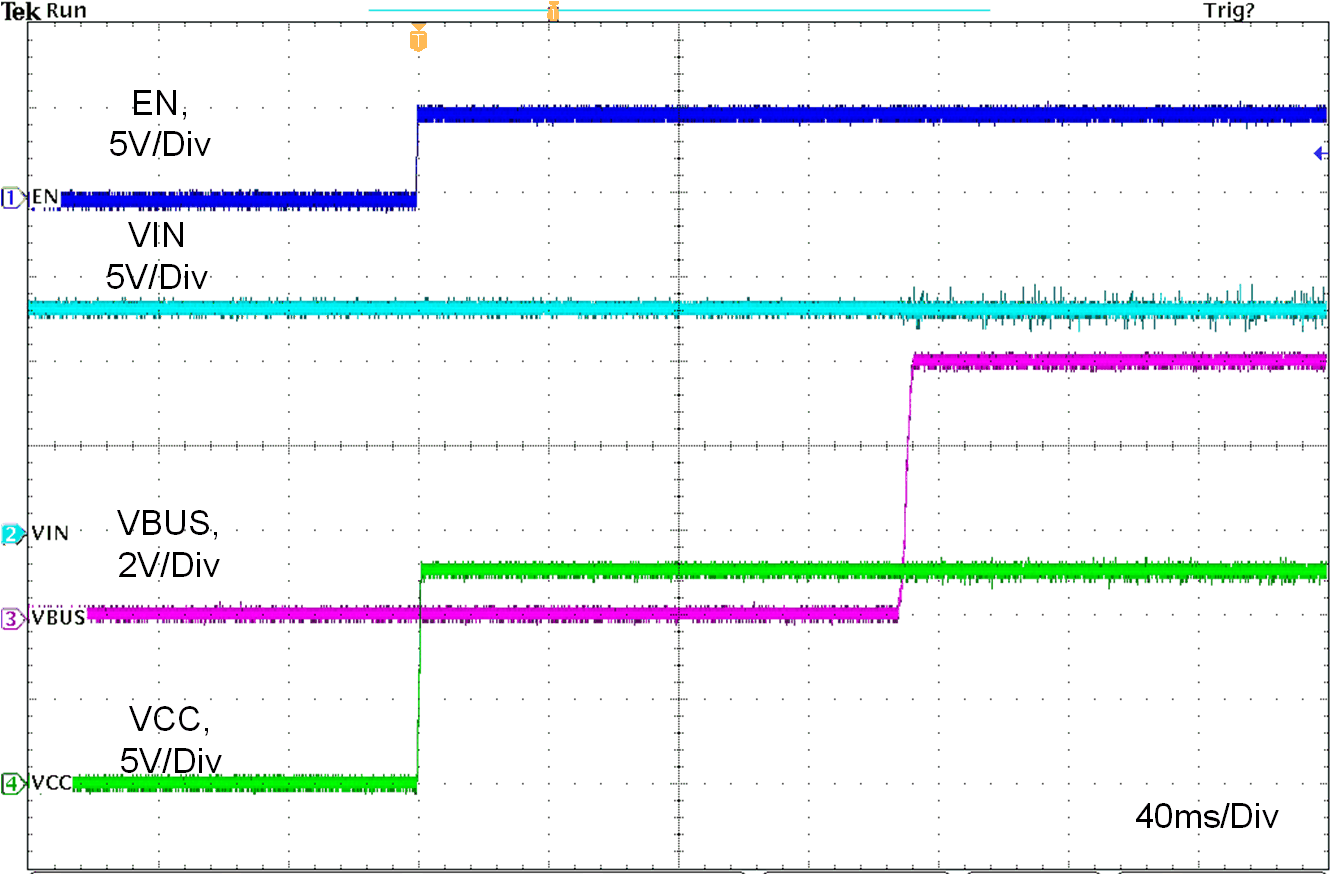
| EN = 0V to 5V |
INT = 5.1 kΩ |
ILOAD =
3A |
Figure 11-18 Startup Relate to EN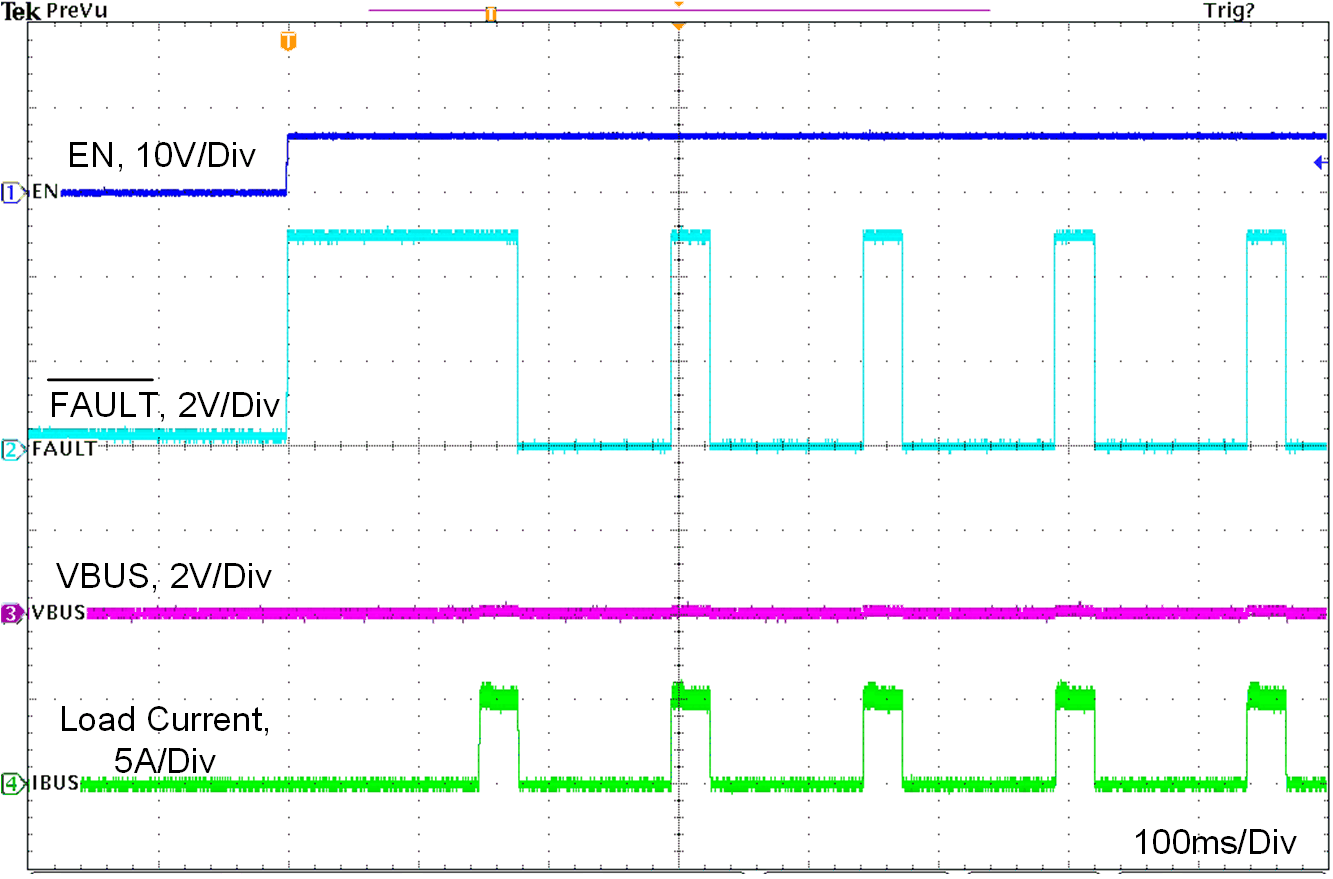
| EN to High |
VBUS = GND |
RLIMIT = 13
kΩ |
Figure 11-20 Enable into Short Without External FET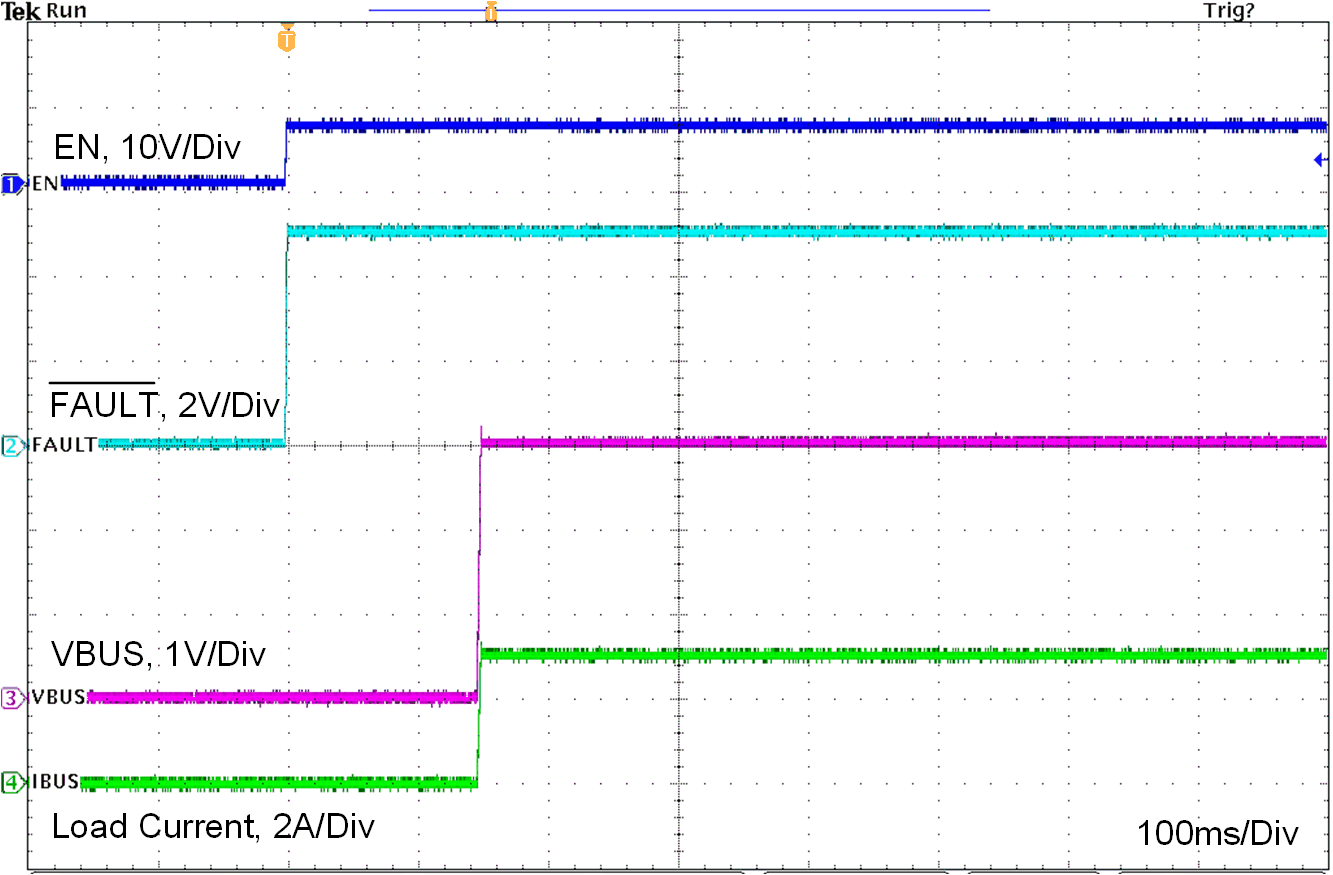
| EN to High |
VBUS = GND |
RLIMIT = 13
kΩ |
|
|
|
Figure 11-22 Enable Into 1-Ω Load Without External FET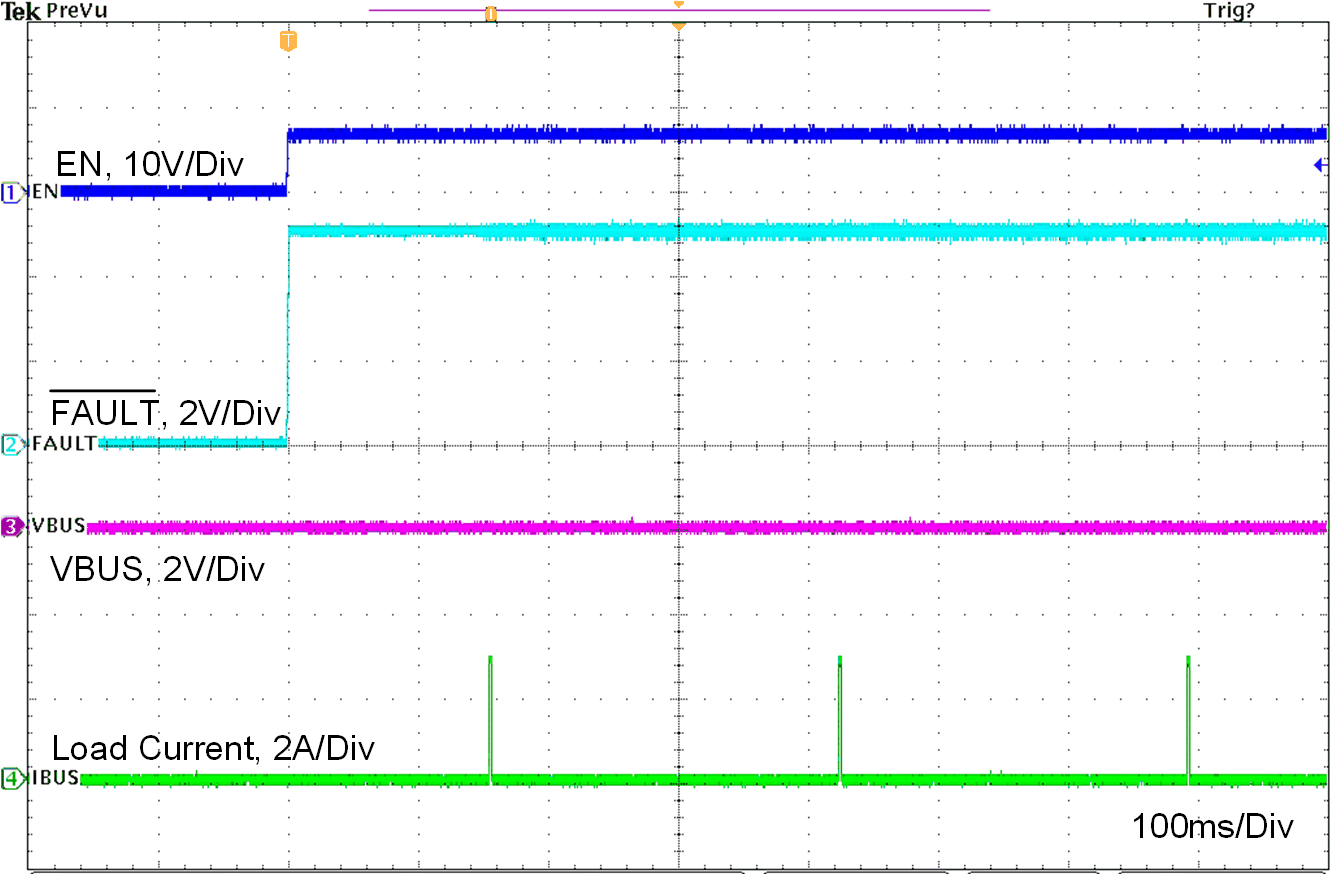
| EN to High |
VBUS = GND |
RLIMIT = 6.8
kΩ |
Figure 11-24 Enable Into Short With External FET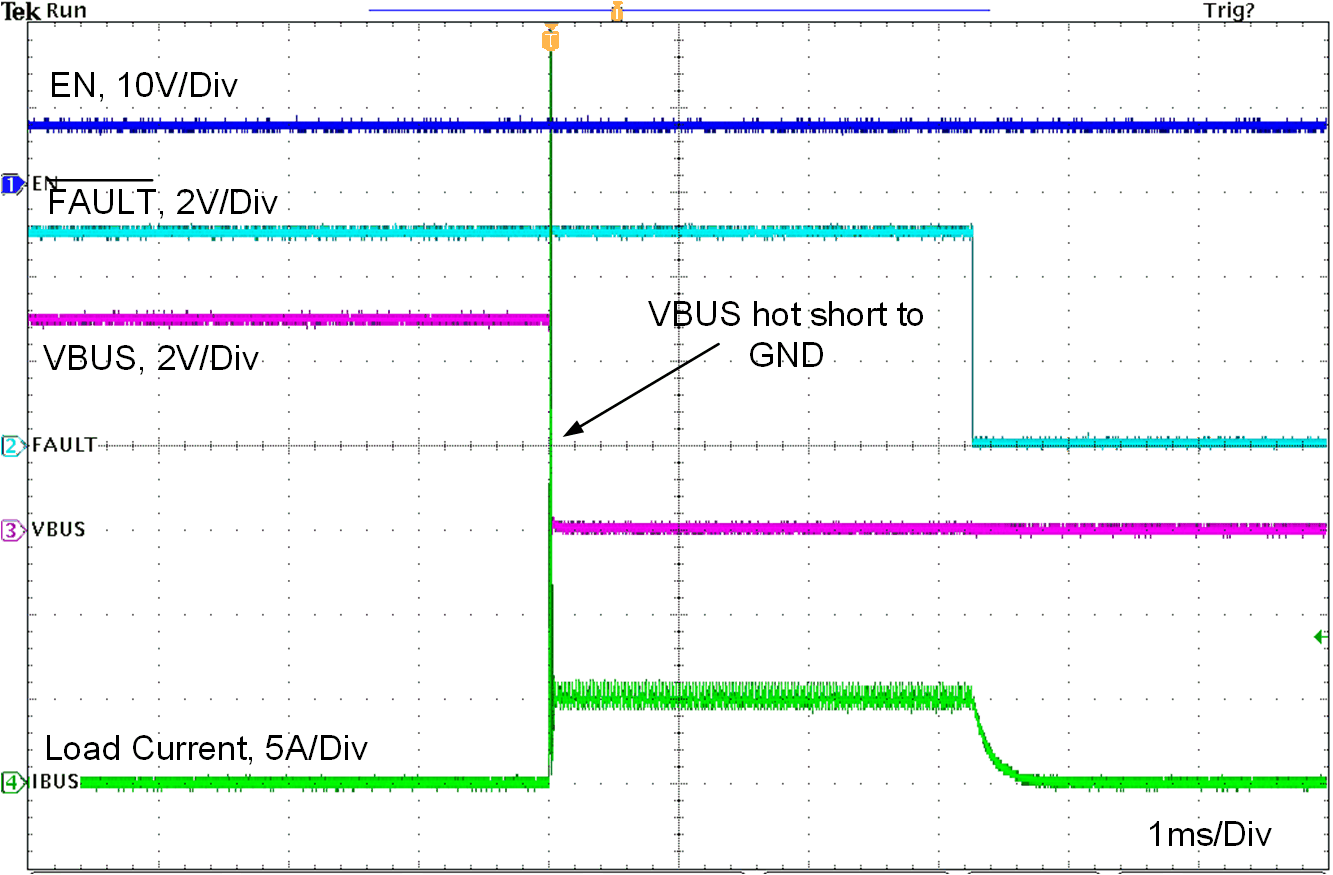 Figure 11-26 VBUS Hot Short to GND Without External FET
Figure 11-26 VBUS Hot Short to GND Without External FET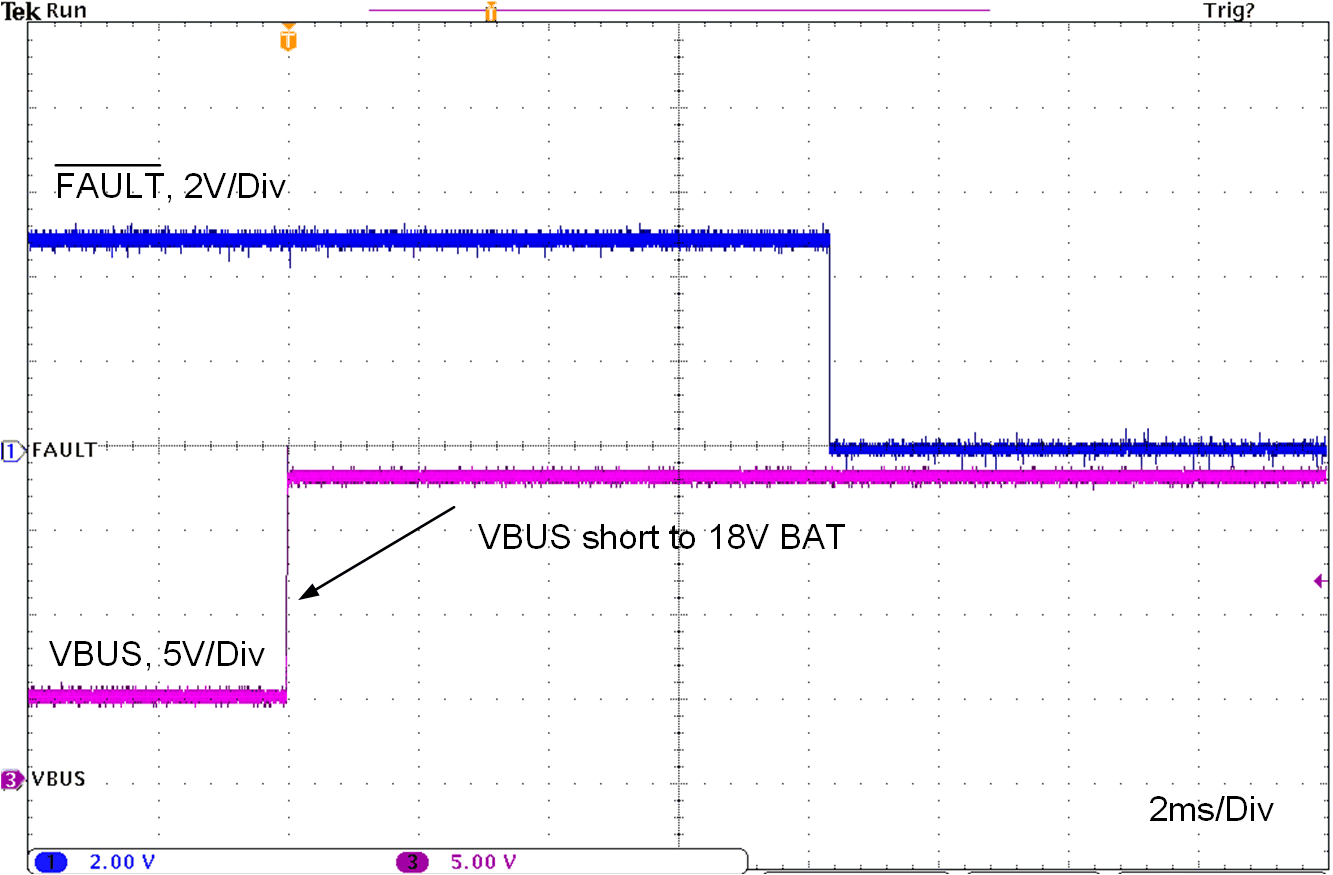 Figure 11-28 VBUS Short to BAT With External FET
Figure 11-28 VBUS Short to BAT With External FET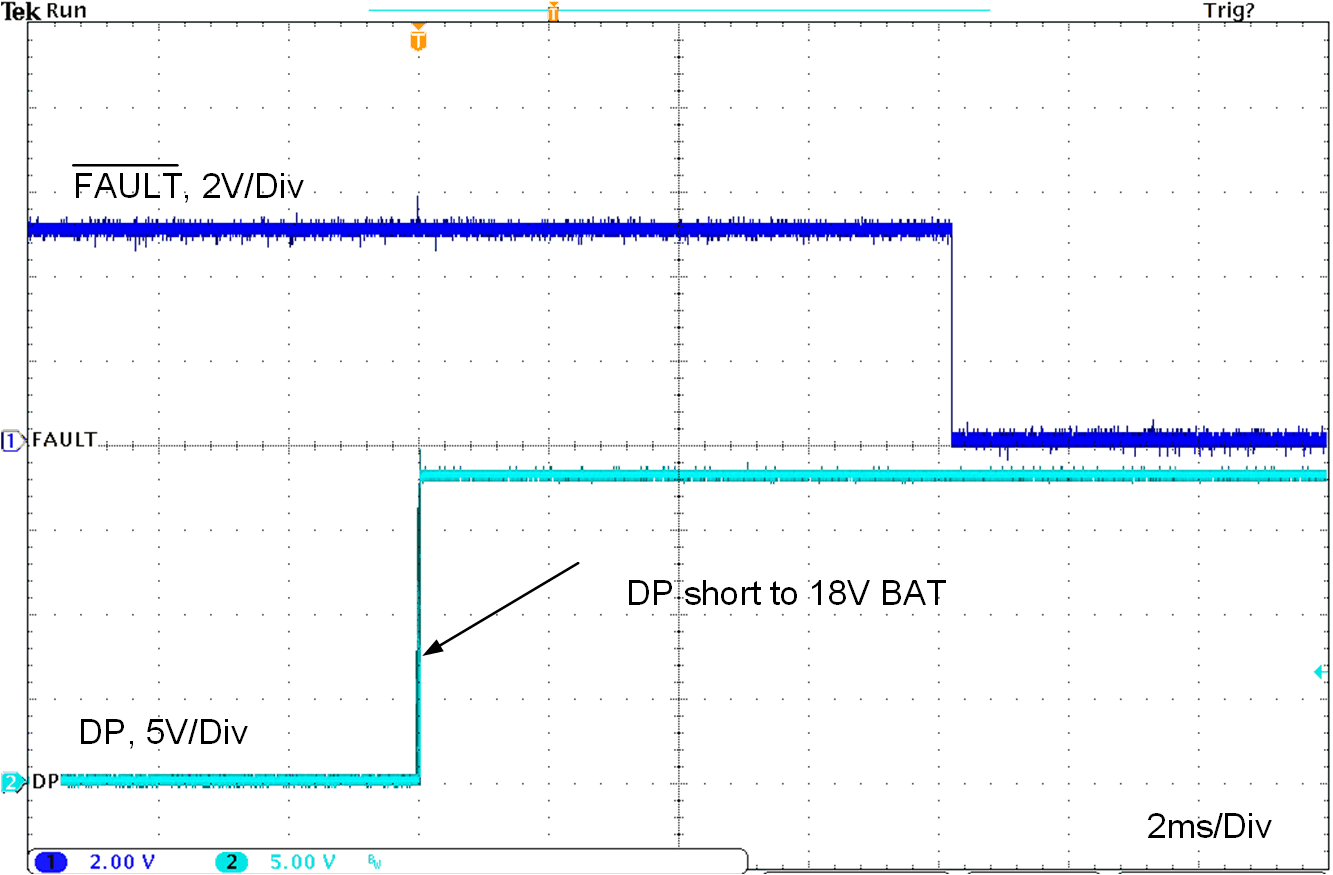 Figure 11-30 DP Short to BAT
Figure 11-30 DP Short to BAT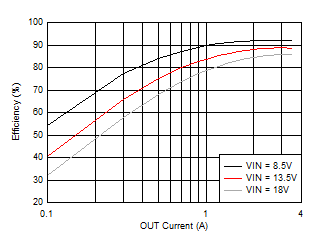
| VOUT = 5.1
V |
fSW = 2100
kHz |
|
Figure 11-3 Buck Only
Efficiency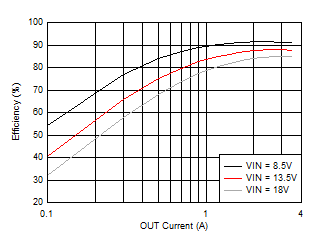
| VOUT = 5.1
V |
fSW = 2100
kHz |
RSENS = 15
mΩ |
Figure 11-5 Efficiency With Sense Resistor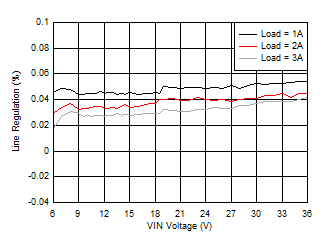
| VOUT = 5.1 V | fSW = 400 kHz | |
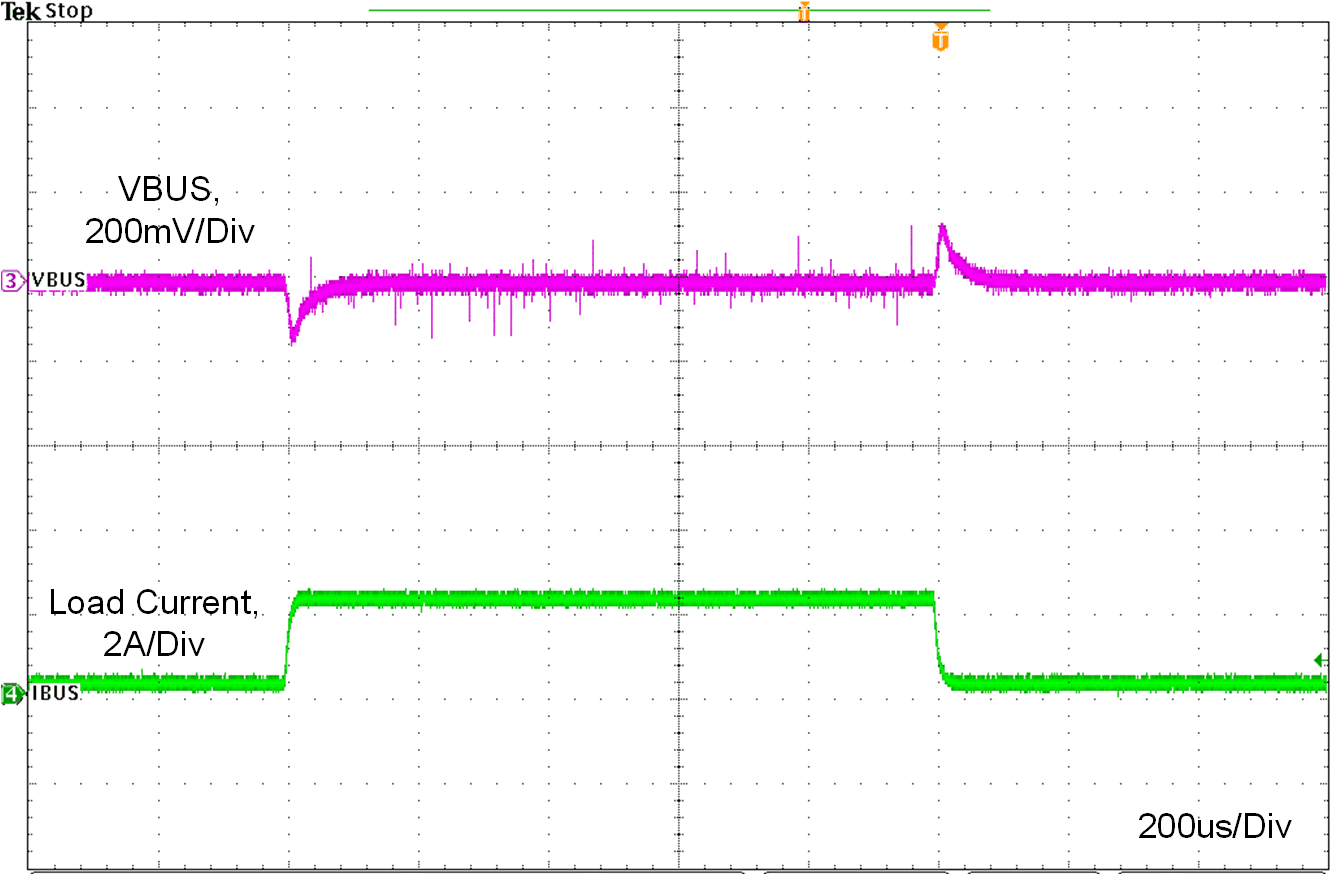
| VOUT = 5.1
V |
ILOAD = 0.75 A to
2.25A |
RIMON = 0
Ω |
Figure 11-9 Load Transient Without Cable Compensation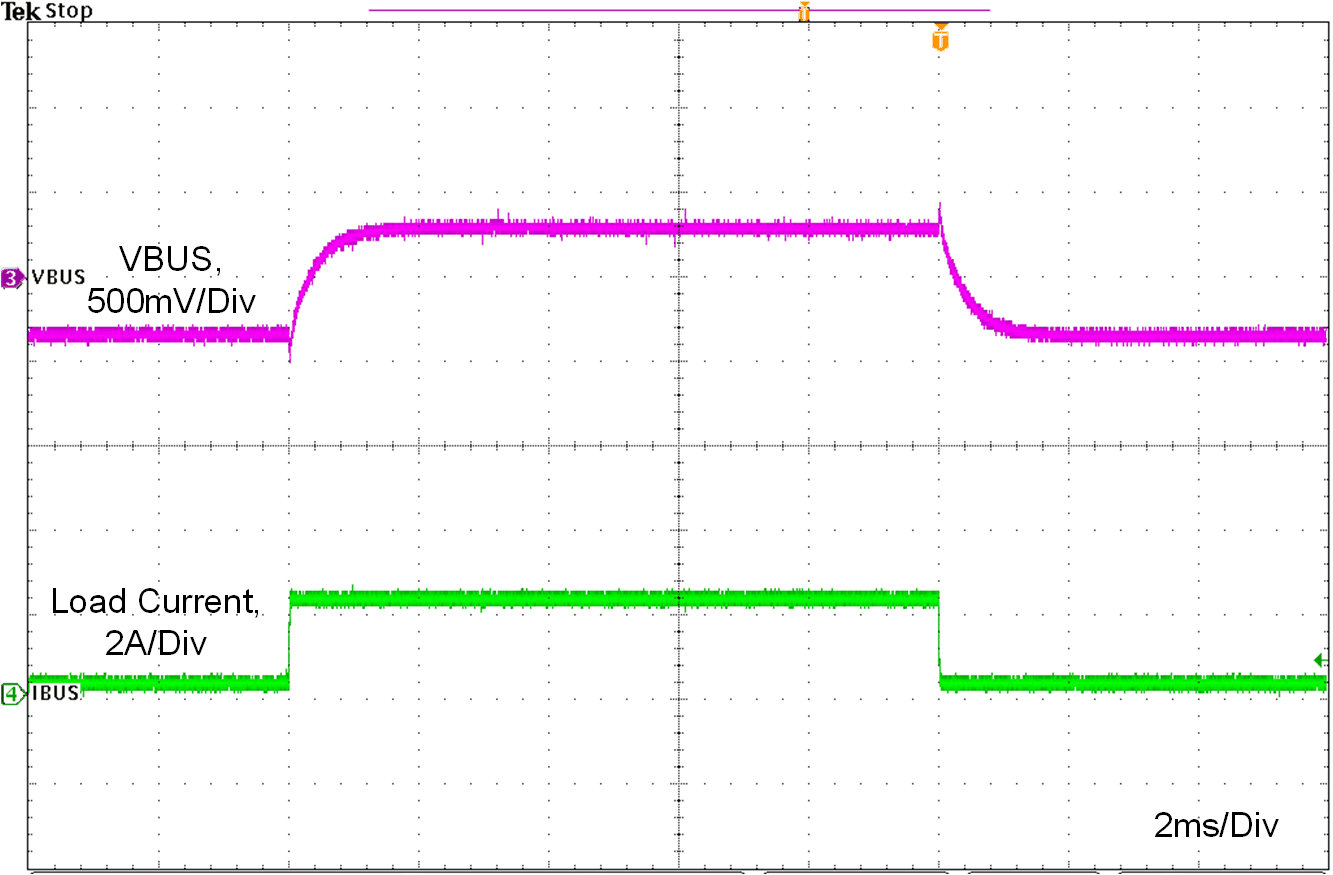
|
ILOAD = 0.75 A to
2.25A |
RIMON = 13
kΩ |
Figure 11-11 Load Transient With Cable Compensation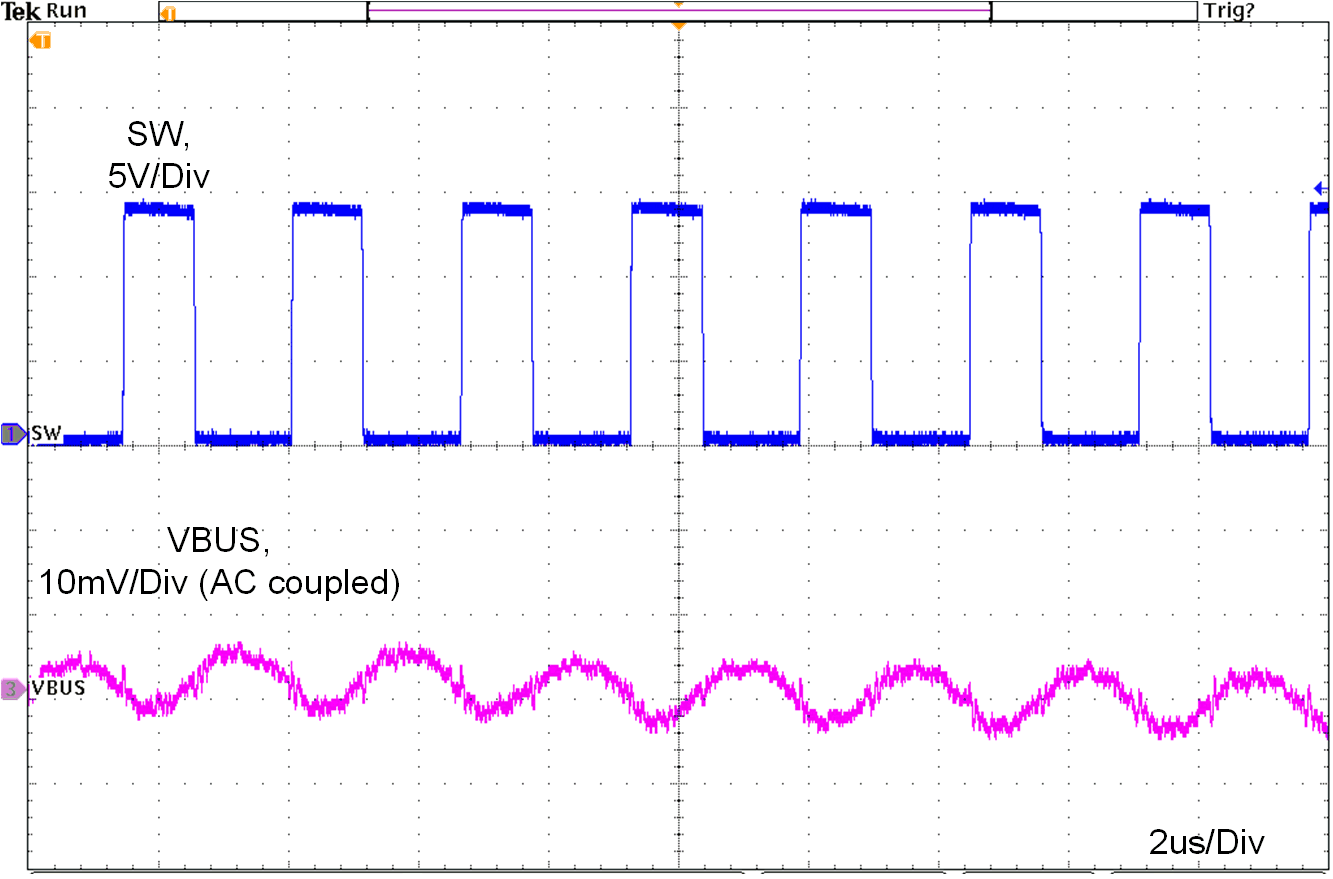 Figure 11-13 3.5-A Output Ripple
Figure 11-13 3.5-A Output Ripple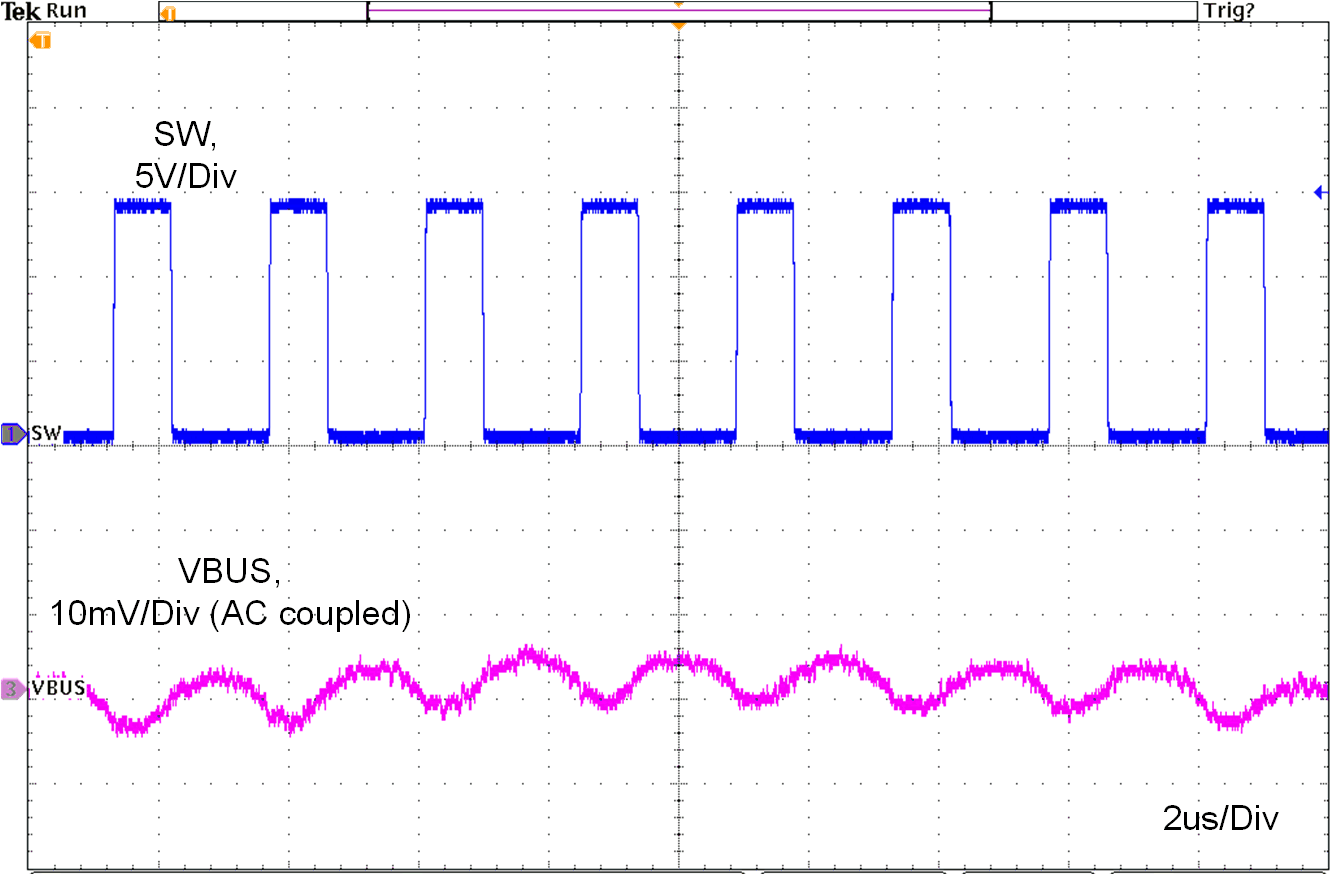 Figure 11-15 No Load Output Ripple
Figure 11-15 No Load Output Ripple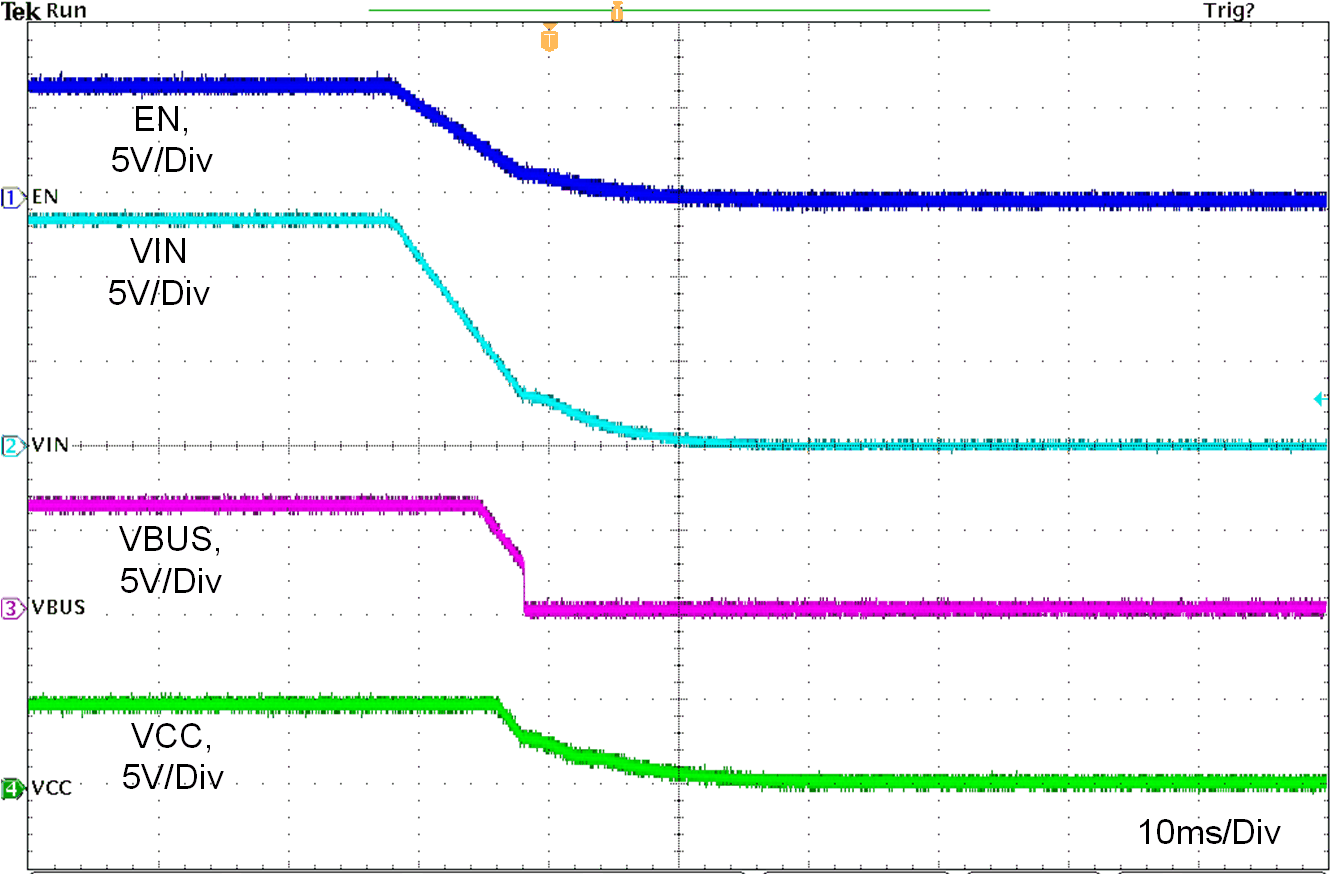
| VIN = 13.5 V to 0 V |
INT = 5.1 kΩ |
ILOAD =
3A |
Figure 11-17 Shutdown Relate to VIN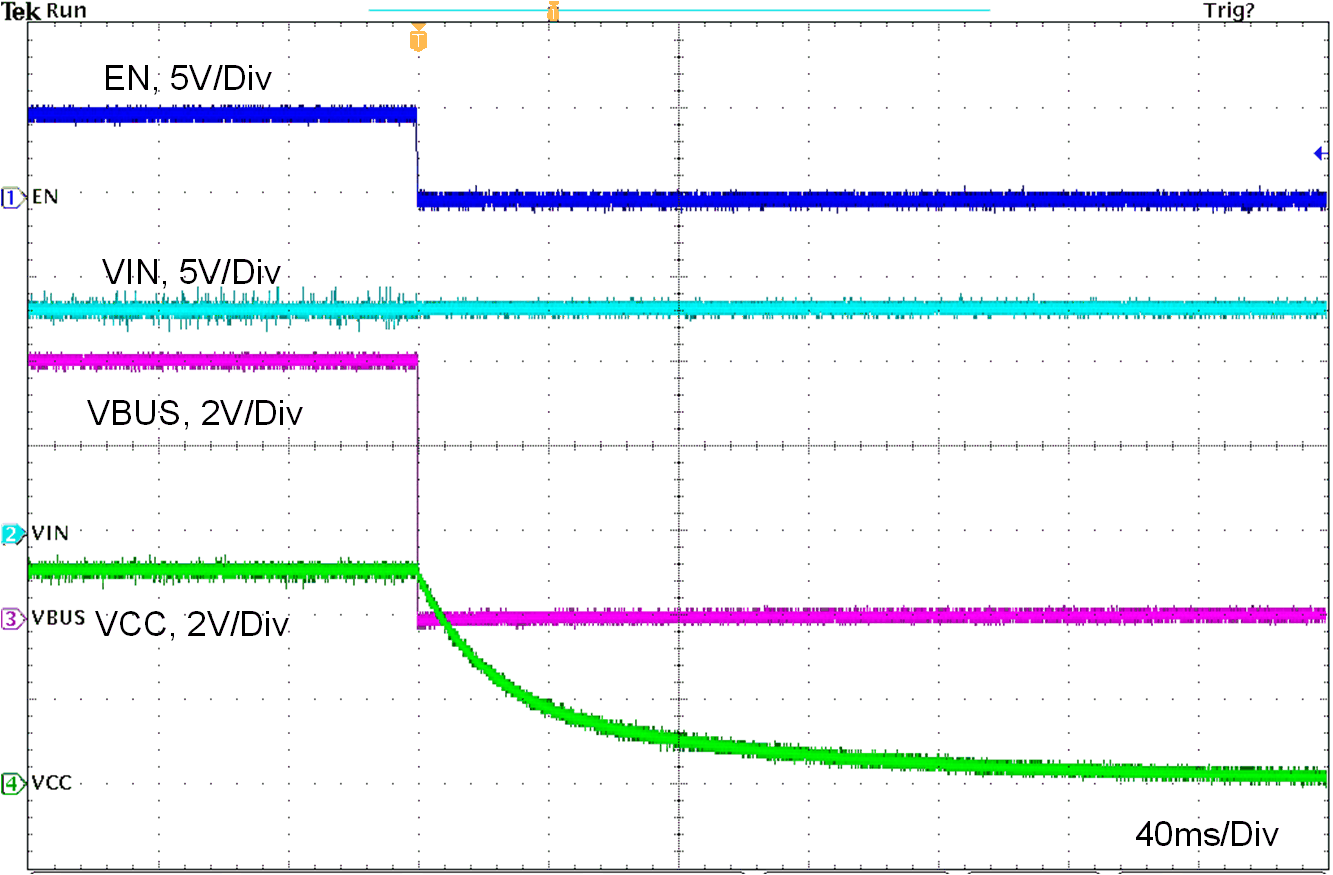
| EN = 5V to 0V |
INT = 5.1 kΩ |
ILOAD =
3A |
Figure 11-19 Shutdown Relate to EN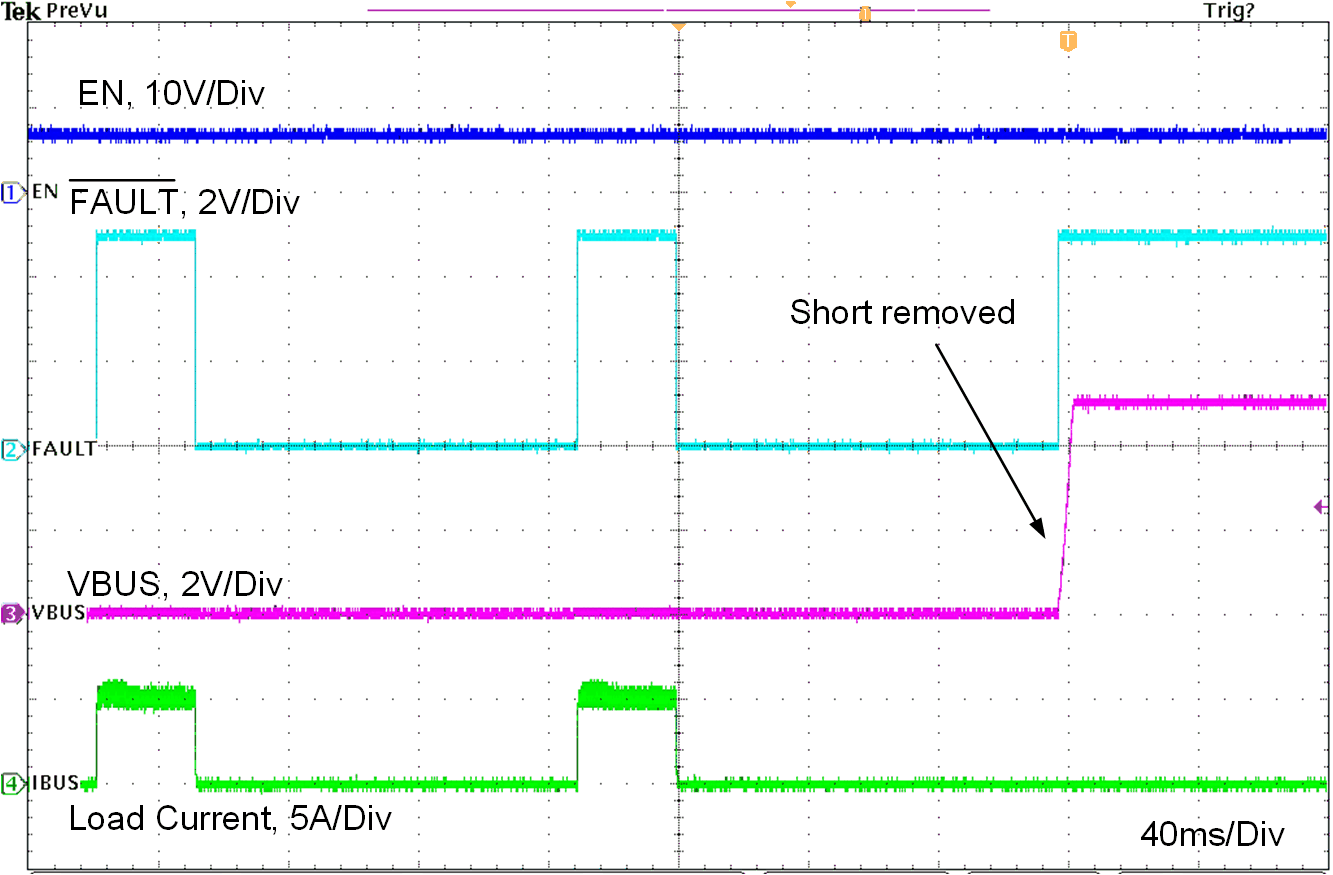 Figure 11-21 Short Circuit Recovery Without External FET
Figure 11-21 Short Circuit Recovery Without External FET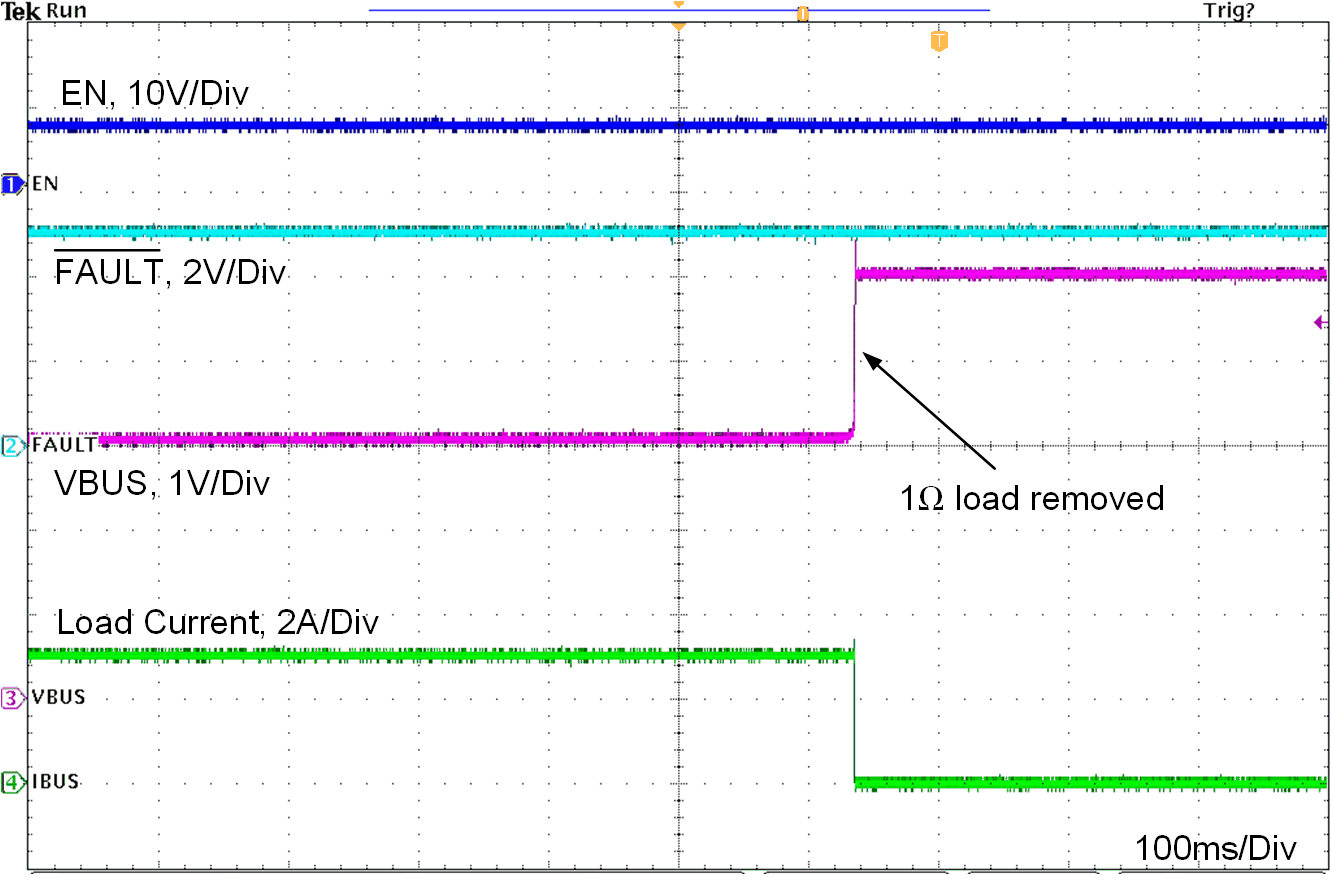 Figure 11-23 1-Ω Load Recovery Without External FET
Figure 11-23 1-Ω Load Recovery Without External FET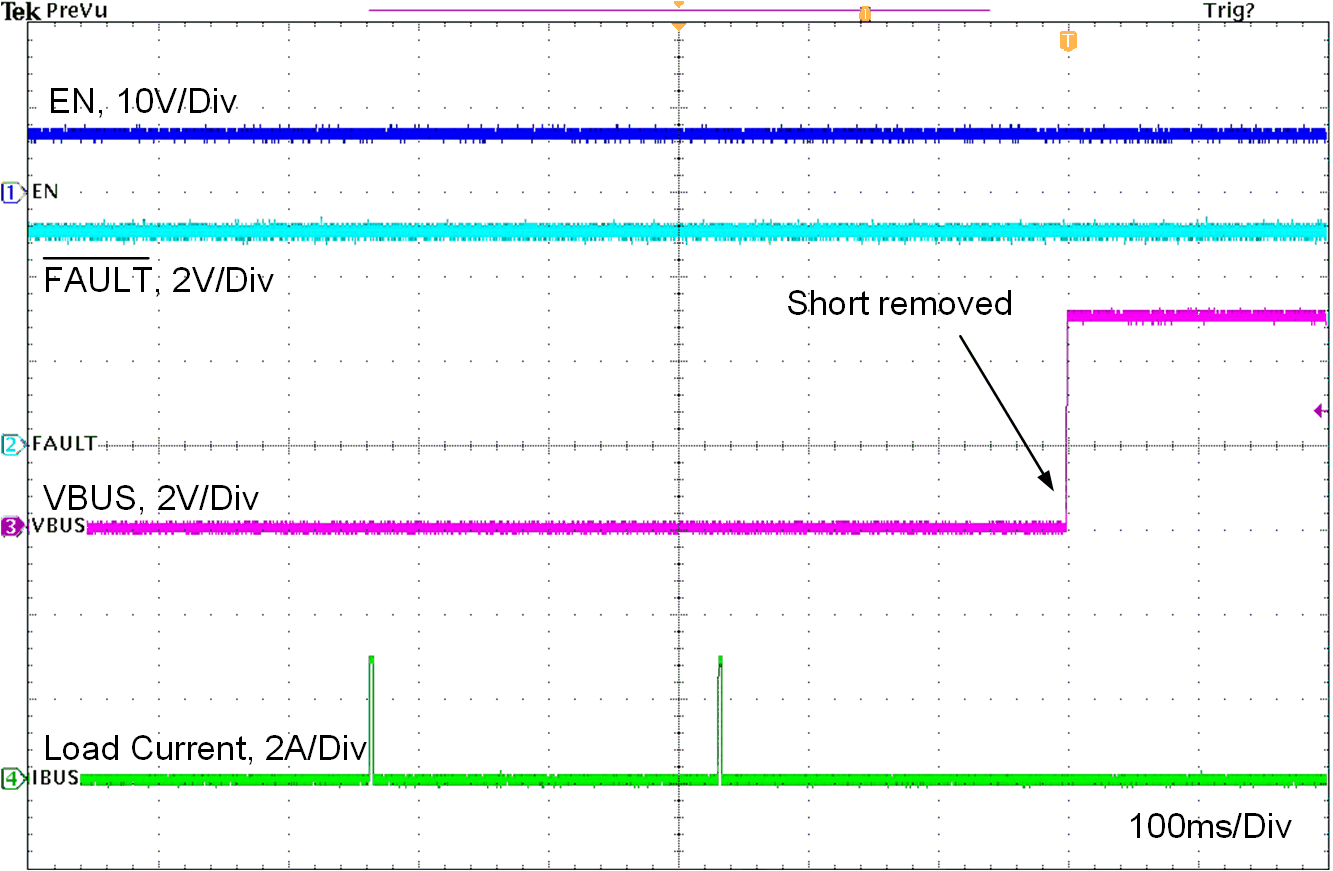 Figure 11-25 Short Circuit Recovery With External FET
Figure 11-25 Short Circuit Recovery With External FET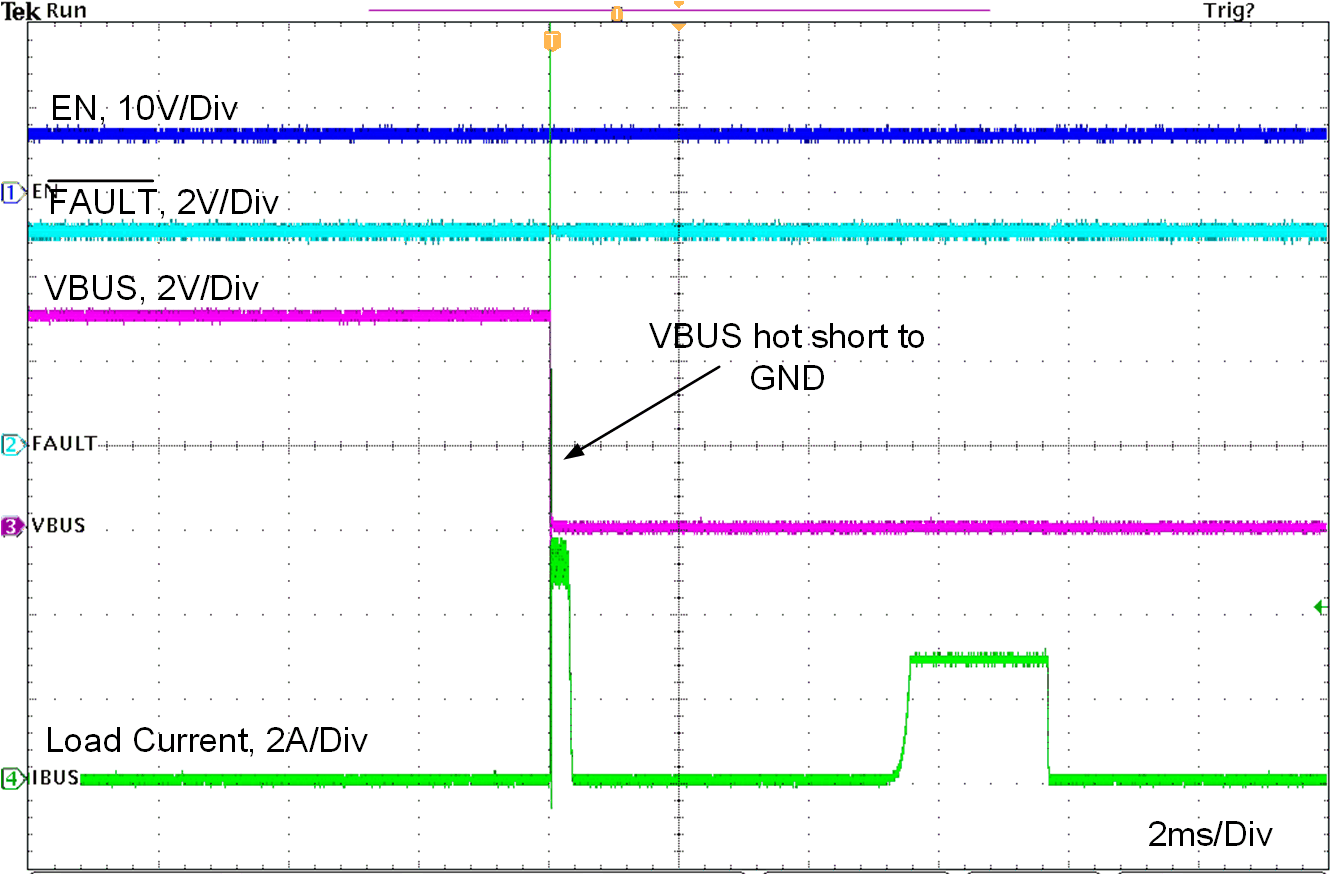 Figure 11-27 VBUS Hot Short to GND With External FET
Figure 11-27 VBUS Hot Short to GND With External FET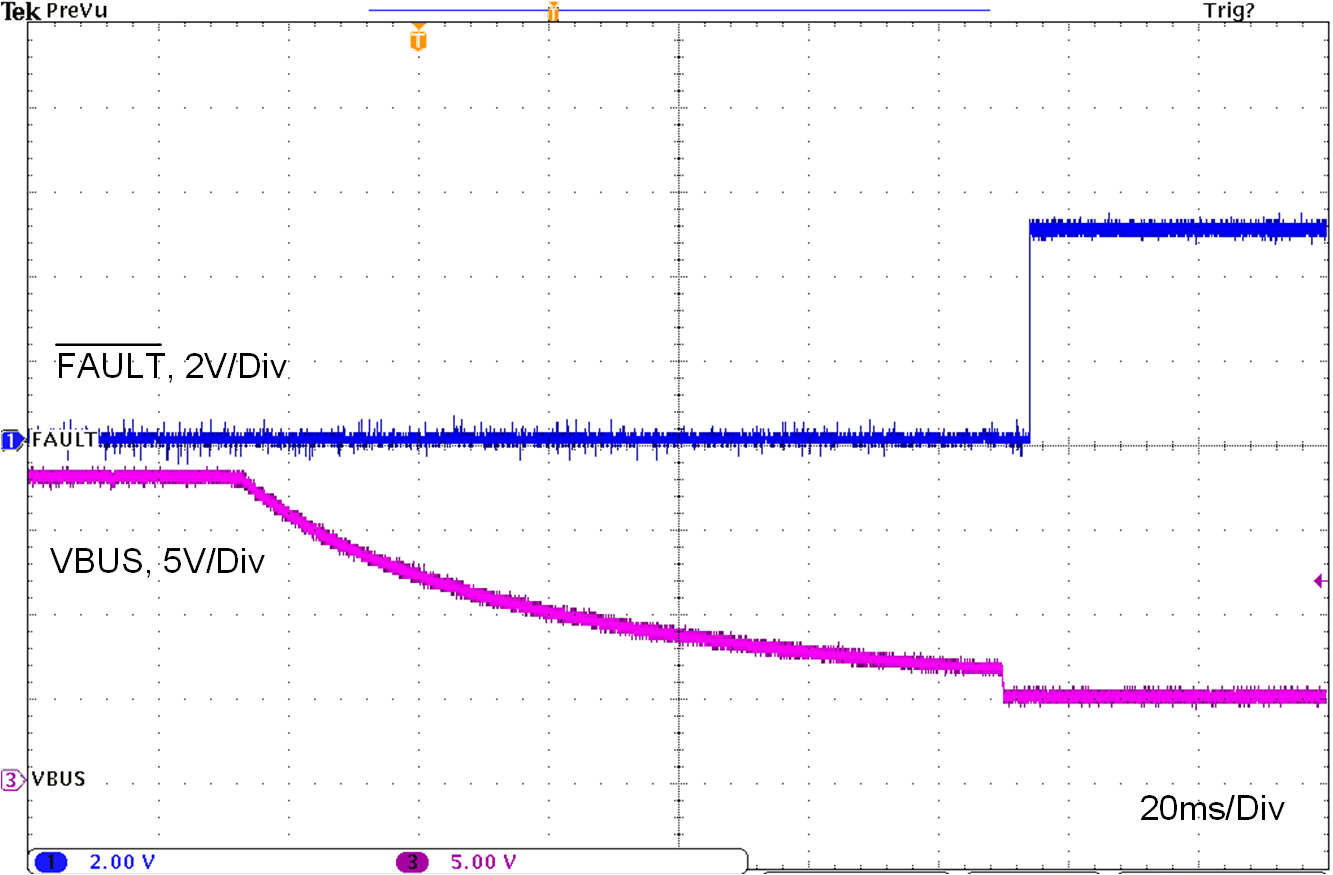 Figure 11-29 VBUS Short to BAT Recovery With External FET
Figure 11-29 VBUS Short to BAT Recovery With External FET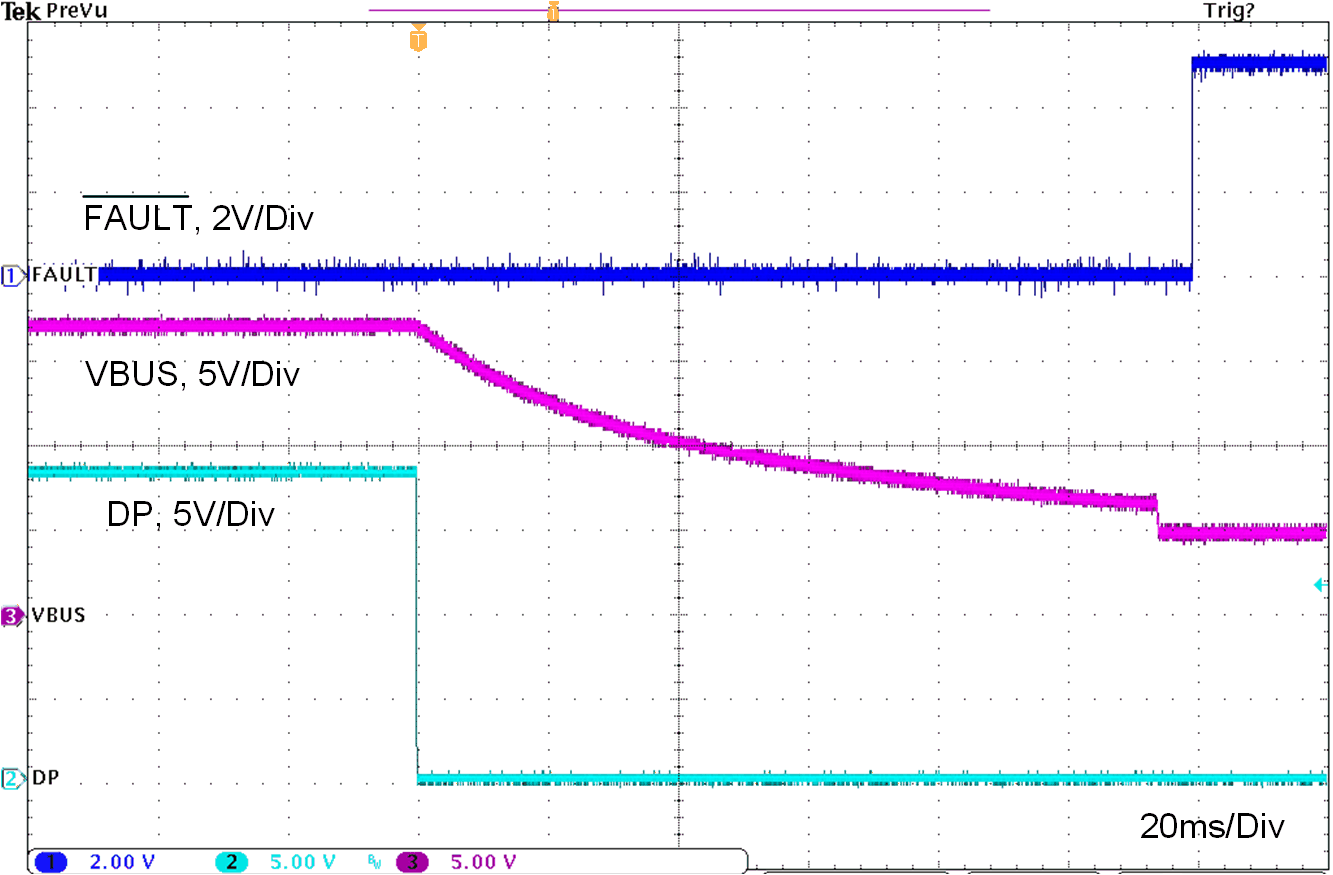 Figure 11-31 DP Short to BAT Recovery
Figure 11-31 DP Short to BAT Recovery





 Figure 11-12 Dropout Characteristic
Figure 11-12 Dropout Characteristic






















